This is a follow up to my previous post where I shared Ben’s Top 5 Fat Loss Tips, from his seminar Advanced Techniques for Muscular Hypertrophy and Fat Loss. This time I want to discuss his Top 5 Muscle Building Tips.
Muscle Building Tip #1: Understand Muscle Function and Train with Focus
One of the first things Ben spoke about was how important it was to have a decent understanding of the function of the muscles you are training. Learn their origins and insertions on your body, what their action is when they contract, understand how to fully shorten the muscle, and focus on creating tension in the target muscles when you are training. Your muscles don’t know how much weight you are moving… they only respond to how much tension you place on them.
Once you understand basic muscle function, you can manipulate your exercises to better target your muscles more effectively. You can learn how to create more tension in the muscles you are training without necessarily using heavier weights.
Ben had a few volunteers, including myself, try some exercises with his coaching to experience how we could manipulate the muscular tension, exercise difficulty, and target muscle groups, just by small changes in how we focused on the exercise and in what direction we exerted force.
If you goal is to build muscle, at each workout you need to focus on which “muscle” you want to train, rather than what exercise you are training. For example, when you are choosing chest exercises, think about training your “pecs” instead of thinking of training “bench press”. Get your ego out of the way, and just make sure you concentrate on really working your chest muscles under control, in a full range of motion, and don’t worry so much about how much you can bench press. Unless you are a powerlifter or other competitive strength athlete the weight is not as important as the tension the target muscle experiences.
Muscle Building Tip #2: Manipulate the right training variables
Ben discussed the various training variables you can manipulate to illicit an adaptive response in your muscles, such as intensity, duration, frequency, sets, reps, rest intervals, etc. Here are a few important points that stood out for me:
- Time Under Tension (TUT): For hypertrophy (muscular growth) Ben believes the ideal time under tension for each set varies for each individual, but suggested that the range is about 40 to 60 seconds of TUT per set.
- Set-Extensions: Ben frequently uses high intensity set extension techniques, primarily strip-sets (what I call “drop-sets”), as well as partials and forced reps. These techniques can be very effective if used sparingly as long as you recognize the significant stress they place on your muscles and nervous system. It’s those last couple of repetitions once you approach fatigue that have the greatest stimulus for muscular development!
- Full Range of Motion (ROM): When possible with any given exercise, train through a full range of motion as long as you can control the weight at the extreme ranges. You need to choose the weight you use for an exercise based on whether you can control the weight at each extreme ROM for the given repetition range you are training with.
- Train in Straight Lines: Don’t get fancy with your exercises by trying to combine different angles of rotation and changing your line of action during the exercise.
Another interesting point he made was that typically bodybuilders (or those training to gain muscle) need to train “inefficiently”, making the muscles work as hard as possible with any given exercise, whereas powerlifters (or those concerned mostly with strength or power) need to train more “efficiently” by using exercises and movements that allow you to move the maximum weight possible with the minimum stress on the muscle (relative to the weight being moved).
Muscle Building Tip #3: Peri-Workout Nutrition is essential for building muscle
According to Ben (and I happen to agree), the best nutrition plan for both health and body composition is a low carb Paleo type diet. Put simply, this means eating as close to how our ancient ancestors used to eat, choosing mostly natural, unprocessed foods. If you could hunt it and eat it, or if it grew naturally (non-farmed), then it is more likely your body will be able to metabolize it better. The majority of your meals would focus on proteins (meats, eggs, poultry, fish), healthy fats (naturally occurring in fish, nuts, seeds, meats, coconut, avocado, etc), berries, and vegetables.
The excessive consumption of carbohydrate foods is promoted by our government food guides due to primarily economic reasons rather than for our optimal health. It is much easier to feed the masses with wheat and corn, which also happen to be the main Cash Crops (and very often GMO). However, your body doesn’t actually need carbs to survive… there are essential fats and essential proteins, but no essential carbs. In fact, too much carbohydrate food (especially sugar and starchy carbohydrates like grains) can lead to insulin sensitivity problems, obesity, diabetes, and other health issues.
Having said that, Ben did explain how carbs can still be used as a tool, if consumed sparingly and used strategically. By cycling your carbohydrate intake you can elevate your insulin at specific times in order to facilitate muscular growth, while still keeping your overall consumption low. Basically you will have higher carb days (training days) and low carb days (rest days). This is where your Peri-Workout nutrition comes into play. By consuming carbs immediately after your workout you create an insulin spike which will load your muscles with glycogen and increase the uptake of other nutrients. Insulin is a “storage hormone” and can increase the storage of nutrients in muscle if used strategically, but it can also increase the storage of nutrients in fat cells if carbohydrates are consumed in access.
Ben suggested consuming protein and other supplements pre-workout and waiting until after the workout to consume carbohydrates (along with your protein shake). Avoid consuming fat around your workouts, close to when your insulin will be spiked.
Muscle Building Tip #4: Choose the right supplements
This ties in with Tip #3… choose the best supplements for before and after your workout.
A few of the Pre-Workout Supplements Ben recommended included:
- BCAA’s (Branched Chain Amino Acids)
- L carnitine
- BA (Beta Alanine)
- Creatine
Some of the Post Workout Supplements included:
- Insulin potentiators such as R-ALA and Chromium
- Antioxidants
- Multivitamin
- Whey protein isolate
- Carbohydrates
You can order quality supplements at excellent prices from Popeye’s outlets or online at True Nutrition (you can use my discount code TOPFORM for 5% off your order).
Muscle Building Tip #5: Train for your body type
We spent some time discussing the issues with following a “one-size fits all” training program. Although there are certain training variables which remain fairly consistent for most people if they have the same goals, everyone is different and our unique body types will respond differently to the same program. As a simple generalization, most people fall into one of 3 body types: Ectomorph (thin, small framed, hard to build muscle); Mesomorph (muscular, athletic build, gains muscle easily); and Endomorph (stockier build, thick frame, gains muscle and fat easily) … or some combination thereof.
Here are some general training guidelines for each body type, for building more muscle mass:
Ectomorph:
- Train in the 6-8 rep range
- Perform fewer total sets (low volume)
- Perform more frequent workouts
- Keep your workouts brief but intense (under 45 minutes)
Mesomorph:
- Train in the 8-12 rep range
- Take more rest between workouts
- Use heavy weights
- Workouts can be up to an hour in duration
Endomorph:
- Train in the 10-15 rep range
- More frequent workouts
- Higher volume
- Workouts can be around 60-90 minutes long
A couple of other interesting points that Ben mentioned was that he sees an MAT (Muscle Activation Technique) specialist to keep his body in balance, restore healthy range of motion, and prevent injuries. I posted about MAT before as well … you can read more about it here:
=> Muscle Activation Technique
He also discussed how many people have allergies or food sensitivities to wheat and dairy products. If possible it is recommended to reduce the consumption of wheat and dairy products, especially if you notice symptoms such as fatigue, bloating, congestion, or other digestive issues.
Ben Pakulski has also created his own comprehensive training program called MI-40 (Mass Intentions). There is a lot more valuable information on his website… it’s worth checking out:
=> Double Your Muscle Gains with MI-40
Click on the link to his site to learn more about his product, and pick up some great training tips such as:
- How to get better muscle growth results using lighter weights
- How to increase the intensity of every set for maximum hypertrophy
- How to stimulate maximum testosterone response
- How to avoid gaining excessive body fat while building muscle
If your goal is to gain a few pounds of lean muscle tissue, I highly recommend Ben’s programs. He is definitely the “Thinking Man’s” trainer, not just a meat-head bodybuilder. I hope you’ve enjoyed my review of his seminar and picked up some useful information from my last couple of blog posts. I am going to be contacting Ben to see if I can get a guest post or article from him explaining some of his training theories in more detail. As soon as I get something I will post it for you.
Good luck with your training endeavors… Train smart and grow strong!
Josh
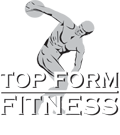
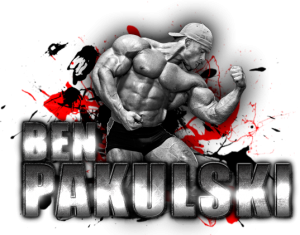
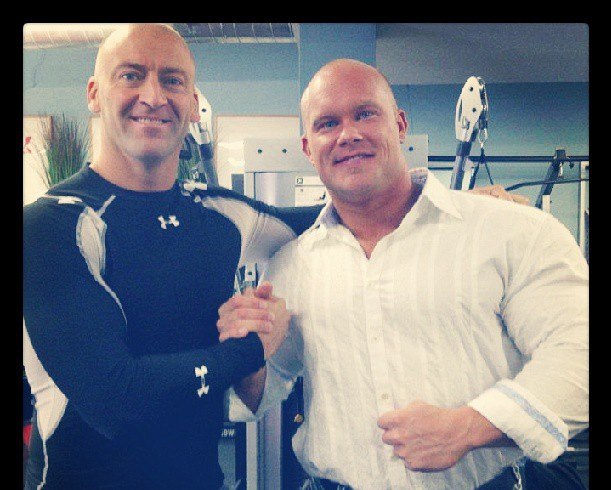
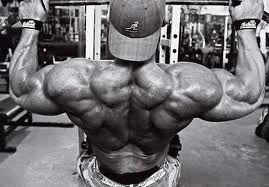
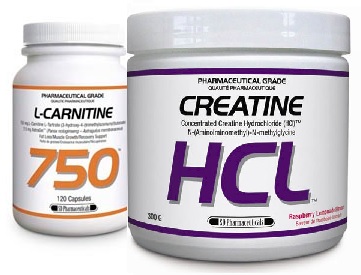


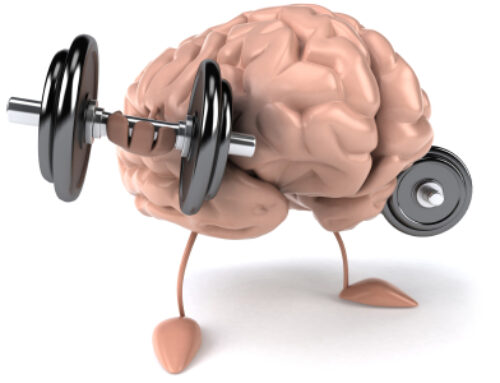
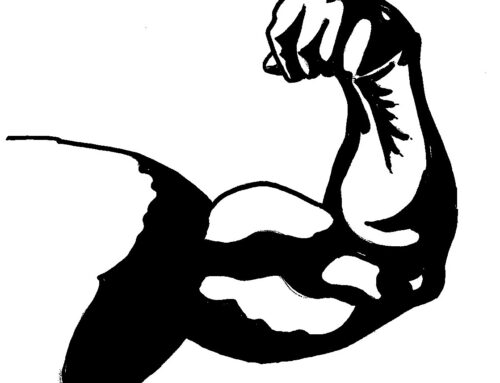
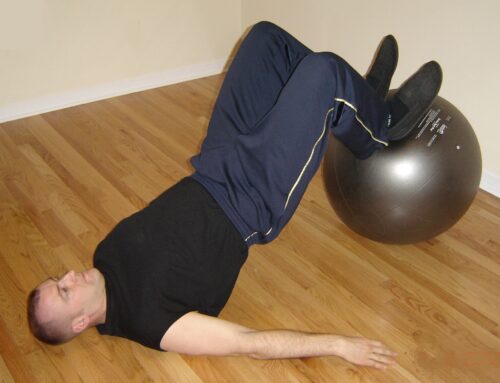


[…] News excerpt from: 5 Muscle Building Tips from Ben Pakulski […]
[…] type diet. Put simply, this means eating as … … Read more from the original source: 5 Muscle Building Tips from Ben Pakulski – Top Form Fitness ← Prevent Workout Injuries – Follow These Safety Tips – […]
[…] the article here: 5 Muscle Building Tips from Ben Pakulski ← THE Greatest MUSCLEBUILDING Health supplements // […]
[…] 5 Muscle Building Tips from Ben Pakulski […]
There are many good points in this article. I’ll check this program out.
Its hard for you to understand if you dont know bout body bunidlig..He meant you cant build EXTRA muscle if you want to lose fat at the same time.Coz bunidlig extra muscles needs 500 caloric surplus and losing fats needs caloric deficit so they do both counter act each other..if you want to bulk up,you need more calorie intake and after six months what so ever depending on what your goals are..drop the calorie intake for defining muscle and change the workout program as well!
Oh my goodness! Impressive article dude! Thank you so much, However
I am having difficulties with your RSS. I don’t understand the reason why I cannot join it. Is there anybody getting identical RSS issues? Anyone who knows the answer will you kindly respond? Thanks!!
I’m very pleased to uncover this web site. I want to to thank you for ones time due to this fantastic read!! I definitely savored every little bit of it and I have you saved as a favorite to see new things on your blog.
Good day! Would you mind if I share your blog with my twitter group?
There’s a lot of folks that I think would really enjoy your content. Please let me know. Thanks
Wonderful post! We are linking to this particularly
great article on our site. Keep up the great writing.
I like the helpful info you supply in your articles.
I’ll bookmark your blog and test again right here frequently. I am somewhat sure I will learn many new stuff right right here! Good luck for the next!
Do you mind if I quote a couple of your posts as long as I
provide credit and sources back to your website? My blog site is in the exact same niche as yours and my users would really benefit
from some of the information you provide here. Please let
me know if this ok with you. Thanks a lot!
Google…
always a large fan of linking to bloggers that I enjoy but really don’t get a great deal of link really like from…
… [Trackback]
[…] Read More: top-form-fitness.com/fitness-blog/top-5-muscle-building-tips/ […]
[…] https://top-form-fitness.com/fitness-blog/top-5-muscle-building-tips/ […]